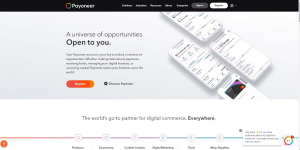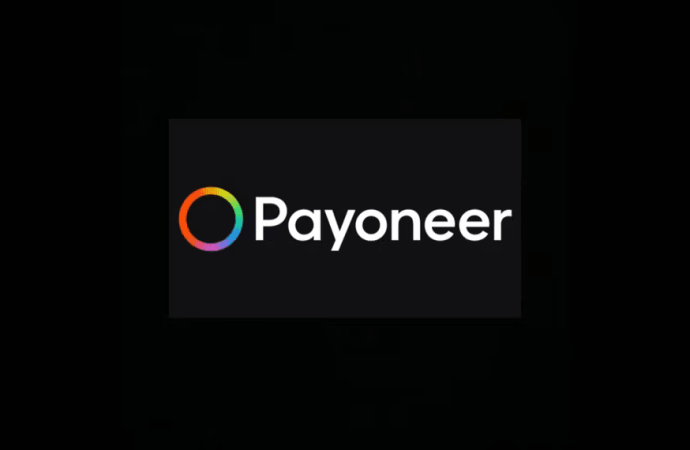Introduction: Payoneer for Freelancers For freelancers, navigating the world of payment processing can be as daunting as scaling a mountain. The choice of a payment platform not only needs to align with your financial needs but also cater to your clients’ convenience. Amidst a plethora of payment methods, Payoneer emerges as a prominent contender. In
Introduction: Payoneer for Freelancers
For freelancers, navigating the world of payment processing can be as daunting as scaling a mountain. The choice of a payment platform not only needs to align with your financial needs but also cater to your clients’ convenience. Amidst a plethora of payment methods, Payoneer emerges as a prominent contender. In this article, we delve into the world of Payoneer, exploring its advantages and disadvantages, and empower you to make an informed decision regarding your freelance payments.
Advantages of Using Payoneer as a Freelancer:

Image by https://www.makeuseof.com/
- Global Reach: Payoneer operates in over 200 countries and territories, making it a global choice for freelancers who serve clients from diverse geographical locations. The platform’s international accessibility simplifies payments for freelancers and clients worldwide.
- Low Transaction Fees: Freelancers can enjoy cost-effective transactions with Payoneer, thanks to its competitive fee structure. With charges ranging from 2% to a flat rate for most withdrawals, freelancers receiving multiple payments can save significantly on transaction fees.
- Multi-Currency Support: Payoneer’s multi-currency capabilities cater to freelancers working with clients across various countries. Whether you’re billing in Yen, Euro, or Peso, Payoneer allows you to receive payments in the preferred currency, eliminating the need for costly currency conversions.
- Efficient Dispute Resolution: Payoneer’s dedicated dispute resolution team ensures quick conflict resolution. This feature is invaluable for freelancers who rely on prompt payment to maintain cash flow and meet financial commitments.
- Ease of Setup: Setting up a Payoneer account is a hassle-free process, designed to get freelancers receiving payments within minutes. The user-friendly interface and comprehensive tutorials make it accessible even to newcomers in the world of online payments.
- Robust Security Measures: Payoneer places a premium on user security, employing advanced anti-fraud measures, two-factor authentication, and encryption to safeguard transactions and sensitive information.
Disadvantages of Using Payoneer as a Freelancer:

Image by https://www.makeuseof.com/
- Long Verification Period: Initial account verification on Payoneer can be time-consuming due to international regulatory requirements. This may pose an inconvenience for freelancers seeking immediate access to their funds.
- Charges for Dormant Account: Payoneer imposes charges on dormant accounts, with the amount varying based on the account balance during the period of inactivity. This could impact freelancers with infrequent transactions.
- Possibilities of Payment Delays: While Payoneer strives for efficient payment processing, delays can occur due to technical issues, bank processing times, or disputes. Freelancers should be aware of potential payment delays and take proactive steps to minimize them.
- Fees for Receiving and Withdrawing Money: Payoneer charges fees for receiving money into your account and withdrawing funds to your local bank account. These fees can accumulate, especially for freelancers with high transaction volumes or those working with multiple currencies.
- Limited Withdrawal Options: Payoneer may restrict how and where you can withdraw your funds, potentially inconveniencing freelancers who require flexibility in accessing their money.
Table: Payoneer Pros and Cons
| Aspect | Payoneer Pros | Payoneer Cons |
|---|---|---|
| Global Reach | – Operates in over 200 countries and territories, facilitating international client payments. | – Initial account verification may be time-consuming due to international regulatory requirements. |
| Low Transaction Fees | – Charges competitive fees, saving freelancers money, especially when dealing with multiple clients. | – Dormant accounts incur charges, potentially affecting freelancers with infrequent transactions. |
| Multi-Currency Support | – Enables transactions in various currencies, ideal for freelancers serving clients worldwide. | – Payment delays can occur due to technical issues, bank processing times, or disputes. |
| Efficient Dispute Resolution | – Dedicated dispute resolution team expedites conflict resolution, ensuring timely payment to freelancers. | – Fees for receiving and withdrawing money can add up over time, affecting freelancers with high transaction volumes. |
| Ease of Setup | – User-friendly account setup process allows freelancers to start receiving payments swiftly. | – Limited withdrawal options may inconvenience freelancers who require flexibility in accessing their funds. |
| Robust Security Measures | – Implements stringent anti-fraud security, including two-factor authentication and encryption, ensuring financial safety. | – Limited support for cash withdrawals and potential restrictions on withdrawal locations may pose challenges for some freelancers. |

Image by https://www.makeuseof.com/
Conclusion:
As a freelancer, choosing the right payment platform is a pivotal decision that impacts your financial stability and client satisfaction. Payoneer emerges as a compelling choice, offering a global reach, competitive fees, and multi-currency support. However, freelancers should be mindful of potential drawbacks, such as verification delays, charges for dormant accounts, and the possibility of payment delays. By weighing the pros and cons and considering your specific needs, you can make an informed decision that aligns with your freelance career goals.
In the world of freelance payments, Payoneer stands as a viable contender. Yet, it’s equally essential to explore alternatives like PayPal to make a well-informed choice that best suits your freelancing journey.

















Leave a Comment
Your email address will not be published. Required fields are marked with *